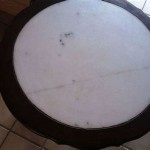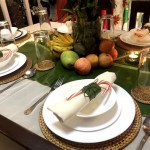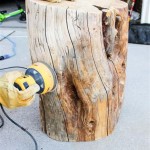Modern Metal Dining Table Legs: A Comprehensive Overview
The dining table serves as a central gathering point within the home. As such, its design significantly contributes to the overall aesthetic of the dining space. While the tabletop material and finish often receive primary attention, the legs play a crucial role in defining the table's style, stability, and longevity. Modern metal dining table legs have emerged as a popular choice for homeowners and designers seeking a contemporary and durable solution.
This article will explore the characteristics, advantages, design considerations, and selection criteria associated with modern metal dining table legs. It will delve into the various types of metal commonly used, the different styles available, and the factors to consider when choosing the ideal metal legs for a specific dining table project.
Material Composition and Properties
The selection of metal for dining table legs directly impacts the table's structural integrity, visual appeal, and resistance to wear and tear. Several types of metal are commonly employed in the manufacturing process, each possessing unique properties that cater to distinct design preferences and functional requirements.
Steel, often considered the workhorse of metal fabrication, offers exceptional strength and durability. Steel legs can support substantial weight, making them suitable for large and heavy tabletops. They are typically finished with powder coating or paint to prevent rust and provide a range of color options. Stainless steel, a variation of steel with added chromium, exhibits superior corrosion resistance, rendering it ideal for environments prone to moisture or humidity. Stainless steel legs often feature a polished or brushed finish for a sleek and modern appearance.
Aluminum, known for its lightweight nature and resistance to corrosion, presents an alternative to steel. While not as strong as steel, aluminum legs are sufficiently robust for smaller to medium-sized dining tables. They are frequently anodized to enhance their durability and provide a variety of color options. Cast iron, characterized by its high density and rigidity, offers a classic and robust aesthetic. Cast iron legs are typically powder-coated or painted to prevent rust and offer a textured, industrial look.
Beyond these primary metals, other options include brass, copper, and wrought iron. Brass and copper offer a warm, luxurious aesthetic and are often used for decorative accents or in conjunction with other metals. Wrought iron, known for its ornate and handcrafted appearance, adds a touch of rustic charm to dining tables.
The specific choice of metal will depend on the desired aesthetic, the weight of the tabletop, and the intended use of the dining table. Understanding the properties of each metal is essential for selecting the most appropriate material for a given project.
The manufacturing process for metal dining table legs greatly influences their overall quality and stability. Welding plays a crucial role in joining different metal components, ensuring strong and durable connections. Precision welding techniques are essential to prevent weak points and ensure the legs can withstand significant weight and pressure. Grinding and polishing techniques are used to create smooth and refined surfaces, eliminating sharp edges and imperfections. These processes enhance the aesthetic appeal of the legs and contribute to a more comfortable user experience.
Surface treatments, such as powder coating, painting, and anodizing, are applied to protect the metal from corrosion and enhance its visual appeal. Powder coating involves applying a dry powder electrostatically and then curing it with heat, resulting in a durable and even finish. Painting provides a wide range of color options but may be less durable than powder coating. Anodizing is an electrochemical process that creates a protective oxide layer on aluminum, enhancing its corrosion resistance and providing a variety of color options.
Styles and Design Aesthetics
Modern metal dining table legs are available in a diverse range of styles, allowing designers and homeowners to achieve various aesthetic effects. The style of the legs significantly contributes to the overall character of the dining table and its integration with the surrounding decor.
Straight legs, a timeless and versatile option, offer a clean and minimalist look. They can be either round or square and are often used in mid-century modern and contemporary designs. Tapered legs, characterized by their narrowing profile from top to bottom, add a touch of elegance and sophistication to dining tables. They are frequently seen in Scandinavian and transitional designs.
Hairpin legs, a popular choice for industrial and retro-inspired designs, feature slender metal rods that splay outwards from the attachment point. They offer a distinctive and visually appealing look while providing ample support. X-frame legs, formed by two intersecting metal pieces, create a bold and architectural statement. They are often used in modern and industrial-chic dining tables.
Pedestal legs, consisting of a single central support, offer a minimalist and space-saving solution. They are particularly suitable for round or oval tabletops and are often used in contemporary dining spaces. Geometric legs, incorporating abstract shapes and patterns, add a unique and artistic touch to dining tables. They can be fabricated from various metals and finished in a range of colors.
Beyond these common styles, custom-designed metal legs offer unlimited possibilities for creating truly unique dining tables. Custom legs can be fabricated to specific dimensions, shapes, and finishes, allowing designers to tailor the table to their exact vision. The choice of style will depend on the desired aesthetic, the size and shape of the tabletop, and the overall design of the dining space.
The finish of metal dining table legs plays a critical role in their visual appeal and compatibility with other design elements. Polished finishes, offering a sleek and reflective surface, are often used for stainless steel and brass legs. Brushed finishes, characterized by their subtle texture, provide a more subdued and sophisticated look. Matte finishes, offering a non-reflective surface, are often used for powder-coated and painted legs.
Color choices for metal legs can range from classic neutrals, such as black, white, and gray, to bolder hues, such as gold, copper, and blue. The choice of color should complement the tabletop material and finish, as well as the surrounding decor. Consider the interplay of textures and colors to achieve a cohesive and visually appealing dining space.
Selection Criteria and Practical Considerations
Selecting the appropriate metal dining table legs requires careful consideration of several factors, including the tabletop size and weight, the desired style, the budget, and the intended use of the table. By carefully evaluating these factors, one can ensure that the chosen legs provide adequate support, complement the overall design, and meet the functional requirements of the dining space.
The dimensions of the tabletop are crucial for determining the appropriate size and number of legs required. Larger and heavier tabletops will necessitate stronger and more robust legs than smaller and lighter tabletops. The legs should be positioned to provide adequate support along the entire perimeter of the tabletop, preventing sagging or instability. Consider the overhang of the tabletop when determining the placement of the legs to ensure comfortable seating.
The weight of the tabletop is a critical factor in determining the load-bearing capacity of the legs. Ensure that the chosen legs are capable of supporting the weight of the tabletop, as well as any additional weight that may be placed on the table during use. Consult with the manufacturer or supplier to determine the maximum weight capacity of the legs.
The desired style of the dining table should guide the selection of leg style and finish. Consider the overall aesthetic of the dining space and choose legs that complement the existing decor. Experiment with different styles and finishes to achieve the desired visual effect. Whether the space is modern minimalist, rustic farmhouse, or industrial chic, there are metal leg options that can enhance the style.
The budget is another important consideration. Metal dining table legs can range in price from relatively affordable to quite expensive, depending on the material, style, and manufacturing process. Establish a budget before you begin your search to narrow down your options. Compare prices from different suppliers and consider the long-term value of the legs. Investing in high-quality legs can ensure the table's longevity and prevent the need for costly repairs or replacements.
Consider the ease of installation when choosing metal dining table legs. Some legs are designed for easy attachment using screws or bolts, while others may require more complex mounting hardware. Ensure that you have the necessary tools and expertise to install the legs correctly. Consider hiring a professional installer if you are unsure of the installation process.
Maintenance is also important. Different metals require different levels of maintenance. Stainless steel is relatively low-maintenance, while wrought iron may require more regular cleaning and rust prevention. Consider the climate and environmental conditions of your dining space when selecting metal legs. In humid environments, choose corrosion-resistant metals or finishes. Regular cleaning and maintenance will help to prolong the lifespan of the legs and maintain their visual appeal.
Proper attachment of metal dining table legs to the tabletop is crucial for ensuring stability and preventing damage. Use appropriate screws or bolts that are sized correctly for the thickness of the tabletop. Predrill pilot holes to prevent splitting the wood. Consider using threaded inserts if the tabletop is made of a soft material. Ensure that the legs are securely attached and that there is no wobble or movement. Regularly inspect the attachment points to ensure that they remain secure.

Steel Dining Table Legs Set Of 2 X Shape Modern Metal Industrial Base Handmade Furniture For By Stalovestudio Finland

Table Legs 421 Xeni 28h Metal With X Sharp Dining Furniture Flowyline

Metal Dining Table Legs Industrial Spider Steel Modern Base For Live Edge Wood

Furniture Legs 405 Haru Modern Metal Dining Table Flowyline

Wide Modern Metal Dining Table Legs 28 Tall Rectangle Shape Steel For Top Industrial Base Large

Metal Dining Table Legs Kitchen Farmhouse Heavy Duty Rustic Desk Modern Steel China Coffee

Trestle Chrome Coffee Table Base Modern Metal Bench Legs X Type Knox Deco

Metal Dining Table Legs Kitchen Desk Height With Modern Steel Look By Symmetry Hardware

Square Rectangular Modern Dining Table Legs Industrial

Ml142 Metal Table Legs 28 Set Of 2 Desk Heavy Duty Cast Iron Square Tube Black X Shaped Dining Modern Industrial Furniture China Coffee








